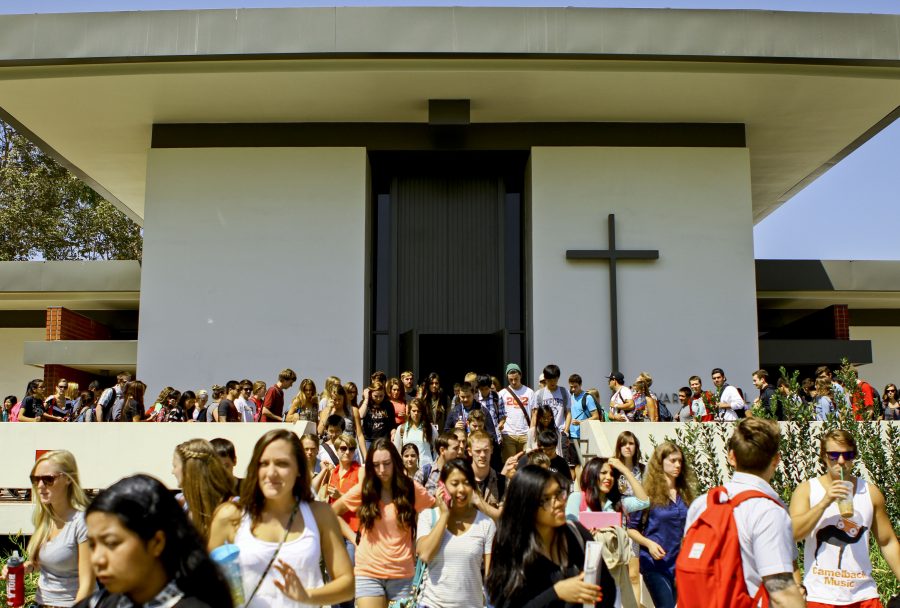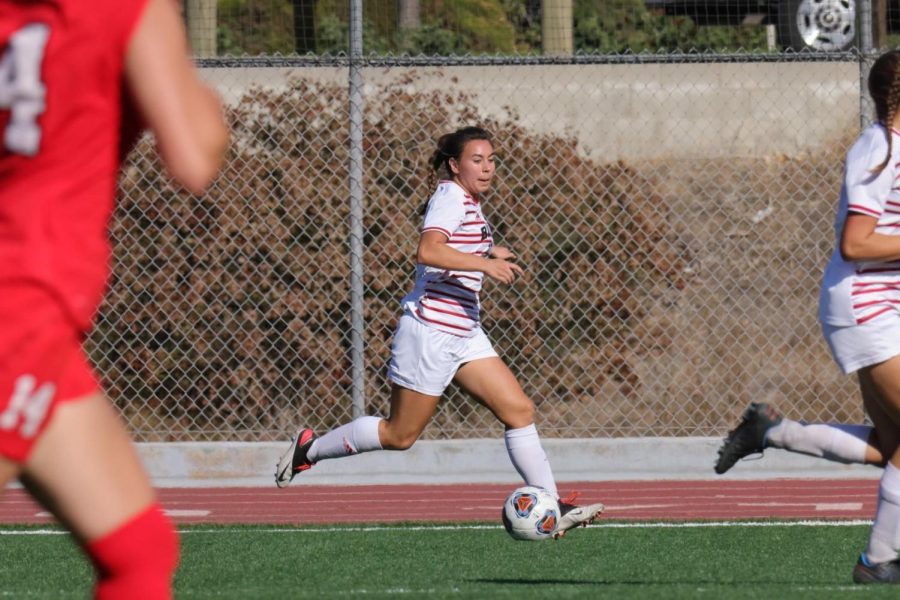More than 80 events, presented by 14 academic departments, showcased the art of sacred space through the Year of the Arts, a collaboration between Roberta Green Ahmanson and Biola University.
As the year’s visionary-in-residence, Ahmanson lent insight and innovation that inspired the university to explore the role of sacred space from a variety of perspectives.
“I think Roberta was wanting us to realize that the way we do things isn’t necessarily the only way to do things. We need to somehow get beyond just our own little paradigm,” art professor Barry Krammes said.
The university’s paradigm was invited to shift by the presence of artists and performers from a variety of Christian denominations, including Dana Gioia, a Roman Catholic, and the monks of St. Michael’s Abbey.
Ahmanson and her husband Howard are widely recognized as philanthropists and art patrons. In 2005, both were noted on Time Magazine’s list of the 25 most influential evangelicals. However, Ahmanson’s love for the arts extends far beyond her public investment. She believes the power of art transcends the confines of the physical realm and informs spiritual perspectives.
“The arts enable us to see into eternity,” she said. “They take us beyond ourselves and our moment, and they force us to look beyond ourselves. And the best of them take us toward eternity and connect us to that.”
Ahmanson sat down with The Chimes to discuss the responsibilities of a visionary-in-residence and how the arts inform her own life.
Q: There are many Christian universities around the United States and around the world. What inspired you to partner with Biola in the way that you did with Year of the Arts?
A: I interviewed Clyde Cook when I was a reporter for The [Orange County] Register and appreciated him. I could see what was happening here. So much of what’s going on in evangelicalism now is ‘How can we find common ground?’ … Mostly by giving up aspects of your faith. I don’t see any reason to do that. I think that’s wrong and through history, when you read the fathers and the people who really changed the world and built great monuments of the Middle Ages, they didn’t throw their faith out the window or compromise to find common ground …
Biola, among the Christian colleges, and I would say uniquely among them, holds that vision [of uncompromising faith]. You have this very strong philosophy department with J.P. Moreland and Craig Hazen and all the people there. It’s very strong and it’s very deeply rooted in the historic Christian faith.
The other thing that Biola has is the Torrey Honors Program. There is no other Christian college with a great books program, not another one. So Biola is taking learning seriously and it’s taking faith seriously.
Biola also was early on involved in the intelligent design movement, which takes great courage, because you have to stand up against the Darwinists who are, you know, their own orthodoxy — and also to say that we are intellectually their equals as well …
Where else would you do it? There’s a great art department and a great vision about learning and the importance of biblical faith. So, it’s a perfect storm.
How would you describe your role as visionary-in-residence?
A: [A visionary-in-residence] is someone who can bring eternal, transcendent, big-picture thinking to a particular place because particular places get caught up in their day-to-day life, the things that they’re doing, which are often good things. You need someone from the outside to come in and shake it up. And God works that way all through Scripture. He sends people along to shake things up in a good way.
God wants to shake things up to bring us closer to him, to enrich our lives and enrich the lives of others, to make the world more like his kingdom. So the role of visionary-in-residence is to, one, husband your own imagination and then to bring a fresh look at the world and at what our ultimate calling is.
Q: When did you first recognize your role and responsibility to influence and affect culture instead of simply being affected by it?
A: I come out of a separatist background, and I’ve never been comfortable in that for a lot of reasons. A professor at a Baptist college sent me to Calvin [College]. And the biggest thing I got there was that God loved the whole world [and] that creation was good — broken, but good. And that, if God called me to be a journalist and I tried to be a missionary, I would be going against the will of God because he didn’t create me to be that. I learned this from my English professor and adviser at Calvin College …
And then, when I lived in Toronto, I was part of a Bible study with people who all felt like that. We were all asking God what he had for us to do. We were all late 20-somethings … it was quite a group of people that God put together. I was in that group when I got fired, and they struggled with me through my calling and all of that, and they helped me.
And then, I think, it became very clear when I worked in newsrooms. I was making a difference with every story because I understood journalism well enough and I understood religion well enough, that I knew how to frame stories to get them on the front page of the newspaper … to get [those stories] in the mainstream and taken seriously. That became very clear to me.
Then when I married Howard, that gave me the opportunity to get involved in art more. And I had always been involved in art. I was always going to art galleries.
On a day-to-day basis, how do you engage in the arts?
A: I am always visually aware, and I have been since I was a child. When you get dressed every morning, it’s an art form. You are a performance artist. We all are. How we get dressed says [something] about where we are that day and what we’ll be doing …
And, you know, I read every day … I grew up in a kind of legalistic culture where you could tell if you were a Christian by all these things you didn’t do, and then you also had to read the Bible every day. So then you get so you resent reading the Bible and the Bible becomes this thing you have to do and you have to get through all that stuff. Forty years ago I was trying to figure all that out.
But then you get to the point where you realize that it’s like you need food every day; this is the spiritual kind of food. Just like you can miss a day or two of food and be okay, but then you’re really hungry, the same is true for the Scriptures. So I read the Bible and I read other things. I read C.S. Lewis everyday and I read John Bailey everyday and I read the Anglican psalter daily prayer from the Book of Common Prayer.
When I’ve got enough time, I read the [early church] fathers. I’ve been reading through the early Christian commentary on Scripture. I think everybody at every Christian college should read the fathers. By reading them, you get in touch with a lot of things. One, that Christianity has been going on for a long time. Two, that a lot of these battles have been fought and won and fought again that we’re fighting now — the theological ones that I raised at the end. Origen would just go, ‘Oh, yes. Are they still arguing about that?’ And he lived in the second century.
They also look at things in a different way because they come from a different time in the world, so they expand your vision. You don’t have to travel. You travel by reading them. C.S. Lewis said that we have to read old books because every time has its blind spots and the only way to get past them is to read old books from a different time. And he is absolutely right about that.
And then I embroider, which is a very crude art form of mine. And I listen to music in the car. Ever since last fall, I’ve had a really rough kind of year, a lot of hard things in it, and all I can stand to listen to is classical music, preferably vocal. I’ve been listening to Mozart’s Requiem and Jubilate Exsultate, and then I switched — I had to listen to Handel’s Messiah coming up here this morning.






